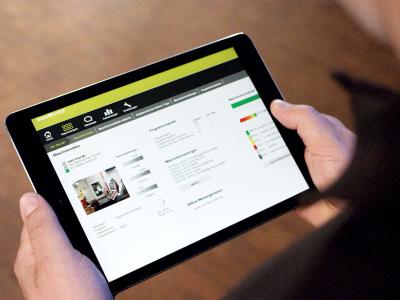
HEIDENHAIN Corp. announces the availability of the new StateMonitor for CNC manufacturing personnel who are implementing connected systems as part of the Industry 4.0 initiative. This new software is an option with HEIDENHAIN TNC controls and connects with PC systems to allow the user to view data and evaluate control processes remotely and in real-time.
Designed to highlight data usage and timesaving workflow methods, as well as provide transparent processes, the HEIDENHAIN StateMonitor user will know the current status of his machine always and everywhere. The user can configure this per project requirements, use it as needed, and evaluate it easily and quickly to work more efficiently and productively.
StateMonitor captures, visualizes and evaluates the status of connected machines and displays it on any networked terminals. It could be a TNC control in production, for example, at which the statuses of several machines are displayed centrally. Or a mobile device such as a tablet or smartphone, so that the TNC user can also leave his machine, e.g., to get new tools from the warehouse or the tool preparation area. PCs, too, can be included in the company network. Then the TNC user can create new NC programs in the quiet office instead of in the loud workshop without losing sight of his machines. In meetings, the user can present up-to-date information about ongoing processes. StateMonitor visualizes the statuses of the connected machines in clear-cut charts and graphs.
StateMonitor is part of HEIDENHAIN’s Connected Machining functional package. Here HEIDENHAIN combines solutions for the completely individual networking of production. This includes the HEIDENHAIN DNC interface, the Remote Desktop Manager and the enhanced display function Extended Workspace, as well as other applications with which the TNC user can receive and use digital job data in the workshop. These solutions place the user at the center of digital order management through the control of their milling or turning machine.
Contact Details
Related Glossary Terms
- computer numerical control ( CNC)
computer numerical control ( CNC)
Microprocessor-based controller dedicated to a machine tool that permits the creation or modification of parts. Programmed numerical control activates the machine’s servos and spindle drives and controls the various machining operations. See DNC, direct numerical control; NC, numerical control.
- direct numerical control ( DNC)
direct numerical control ( DNC)
Method of transferring CNC code from the CAD/CAM system to the machine tool.
- gang cutting ( milling)
gang cutting ( milling)
Machining with several cutters mounted on a single arbor, generally for simultaneous cutting.
- milling
milling
Machining operation in which metal or other material is removed by applying power to a rotating cutter. In vertical milling, the cutting tool is mounted vertically on the spindle. In horizontal milling, the cutting tool is mounted horizontally, either directly on the spindle or on an arbor. Horizontal milling is further broken down into conventional milling, where the cutter rotates opposite the direction of feed, or “up” into the workpiece; and climb milling, where the cutter rotates in the direction of feed, or “down” into the workpiece. Milling operations include plane or surface milling, endmilling, facemilling, angle milling, form milling and profiling.
- numerical control ( NC)
numerical control ( NC)
Any controlled equipment that allows an operator to program its movement by entering a series of coded numbers and symbols. See CNC, computer numerical control; DNC, direct numerical control.
- turning
turning
Workpiece is held in a chuck, mounted on a face plate or secured between centers and rotated while a cutting tool, normally a single-point tool, is fed into it along its periphery or across its end or face. Takes the form of straight turning (cutting along the periphery of the workpiece); taper turning (creating a taper); step turning (turning different-size diameters on the same work); chamfering (beveling an edge or shoulder); facing (cutting on an end); turning threads (usually external but can be internal); roughing (high-volume metal removal); and finishing (final light cuts). Performed on lathes, turning centers, chucking machines, automatic screw machines and similar machines.
- turning machine
turning machine
Any machine that rotates a workpiece while feeding a cutting tool into it. See lathe.

